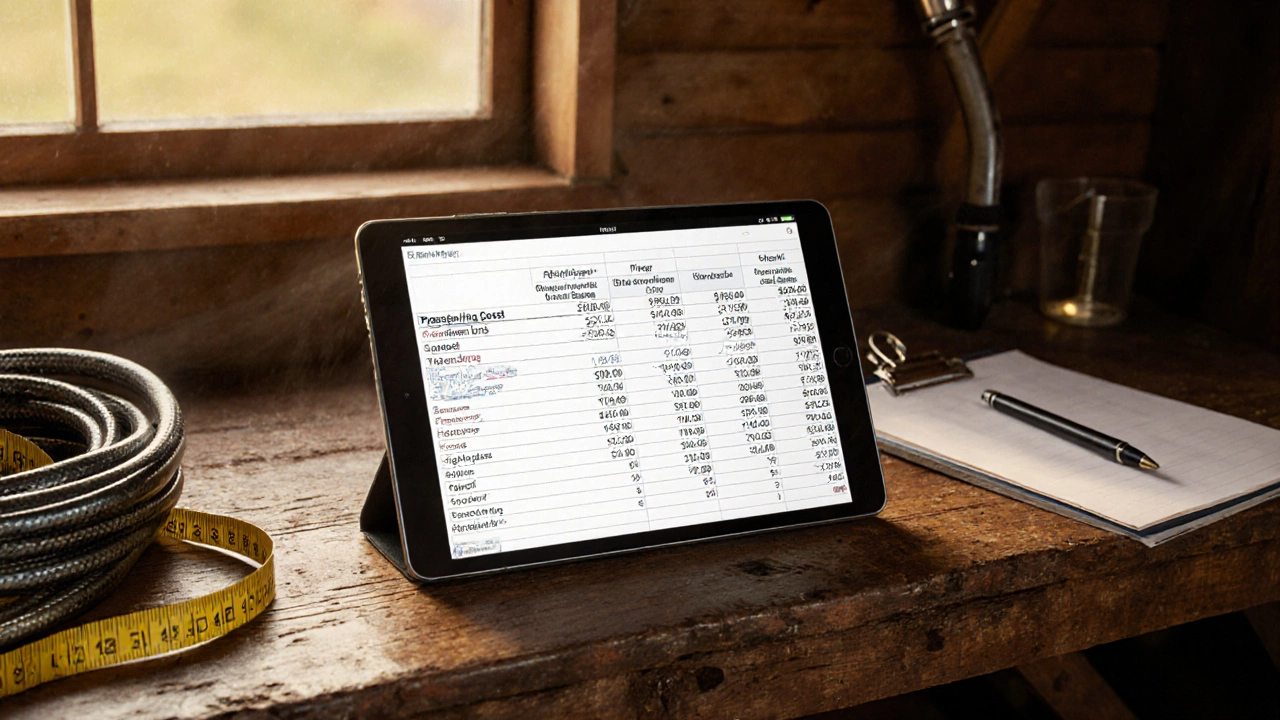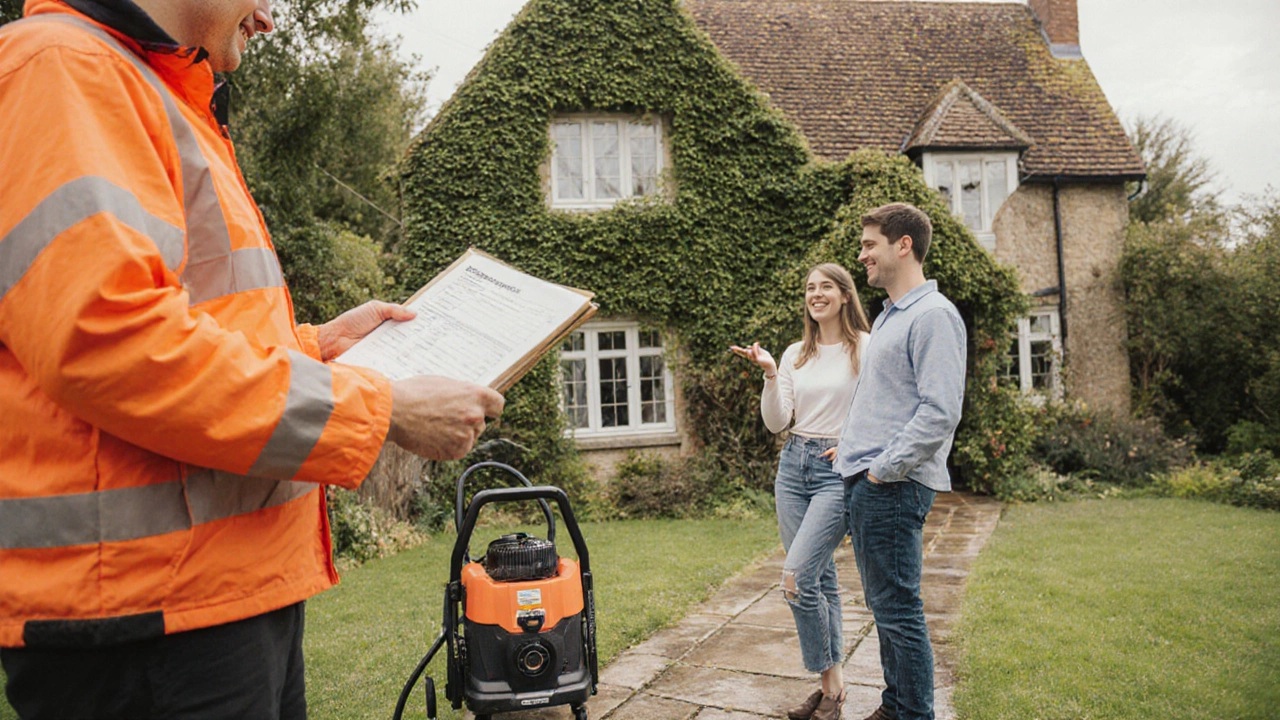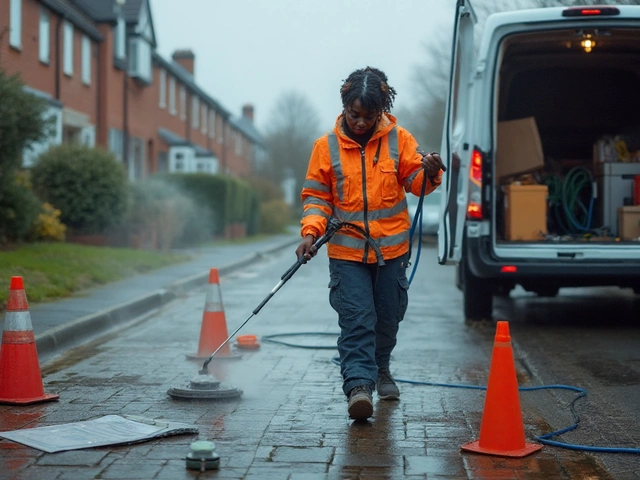Pressure Washing Quote Calculator
When a homeowner asks for a pressure washing quote, they’re not just looking for a number - they want confidence that the job will be done right and at a fair price. Getting that estimate right means understanding every cost driver, measuring the space accurately, and presenting the figures in a way that feels professional. Below you’ll find a step‑by‑step playbook that turns guesswork into a repeatable process.
TL;DR
- Identify the three main cost buckets: labor, equipment/consumables, and travel.
- Measure the surface area in square feet; adjust for height, access difficulty, and material type.
- Pick a pricing model - flat rate, per‑square‑foot, or hourly - that matches the job complexity.
- Plug the numbers into a clean, itemized quote template.
- Add contingency percentages for unforeseen conditions and clearly state payment terms.
1. Break Down the Cost Buckets
Every reliable estimate starts with three core components.
Labor is the amount you pay your crew for time spent on site, including prep, washing, and cleanup. Track the crew size and expected hours, then multiply by your hourly wage rate (including benefits and overhead).
Equipment covers the rental or depreciation cost of the pressure washer, hoses, nozzles, and safety gear per job. Add the cost of any specialized tools such as extension wands or surface‑specific brushes.
Detergent is the cleaning solution you’ll use for tougher grime. Factor in the volume needed based on surface type and the concentration recommended by the manufacturer.
Finally, include a small line for Travel time the minutes it takes to drive to and from the job site. Many contractors charge a flat mileage fee or a per‑hour travel rate.
2. Measure the Job Accurately
Bad measurements = bad quotes. Use a tape measure, laser distance meter, or a simple smartphone app to capture the dimensions.
Square footage is the total playable area you’ll clean, expressed in ft². For flat surfaces (driveways, patios), multiply length by width. For irregular shapes, break the area into rectangles or triangles, calculate each, then add them together.
Don’t forget vertical surfaces. If you’re cleaning a two‑story wall, multiply the wall’s width by its height and then by the number of stories. This gives you a “wall square footage” figure that you can treat the same way as a floor area.
Next, classify the Surface type material being cleaned, such as concrete, brick, wood, or vinyl. Some materials require lower pressure or special detergents, which adds to both labor and consumable costs.
Document any access challenges - steep slopes, limited clearance, or the need for scaffolding. Each obstacle usually adds a fixed surcharge (e.g., $50 for scaffolding) or a percentage increase.

3. Choose a Pricing Model That Fits
Three common approaches dominate the industry.
| Model | When to use | Pros | Cons |
|---|---|---|---|
| Flat rate | Standard jobs with known dimensions (e.g., typical driveway) | Simplifies client communication; easy to sell | Risk of under‑quoting if unexpected issues arise |
| Per‑square‑foot | Variable‑size jobs, large commercial projects | Scales directly with workload; transparent to client | Clients may focus on the number rather than the quality |
| Hourly labor + material markup | Complex jobs with multiple surface types or heavy prep | Captures true labor effort; flexible for changes | Harder for clients to anticipate final cost |
Pick the model that aligns with the job’s predictability and the client’s comfort level. Many pros start with a per‑square‑foot estimate, then apply a flat‑rate discount if the client prefers a single number.
4. Build an Itemized Quote Document
Structure matters. A clean layout builds trust.
- Header: Your business name, logo, contact info, and quote date.
- Client details: Name, address, phone, and email.
- Scope of work: List each surface (e.g., "Front driveway - 1,200ft² concrete") and the chosen pressure level.
- Cost breakdown:
- Labor - X hrs × $Y/hr = $Z
- Equipment - depreciation or rental fee = $A
- Detergent - quantity × $B = $C
- Travel - flat mileage fee = $D
- Contingency: Add 5‑10% for unexpected grime or hidden obstacles.
- Total: Sum of all line items, clearly highlighted.
- Terms: Payment schedule (e.g., 50% upfront, 50% on completion), valid‑until date, and warranty notes.
Use a spreadsheet or a simple word processor template. Save the file as PDF before sending - it prevents accidental edits and looks professional.
5. Adjust for Extras and Edge Cases
Even the best‑planned job can have surprises. Keep a checklist ready.
- Stubborn stains: Add a surcharge for extra chemical use or a second pass.
- Elevated work: If you need a ladder or lift, add $30‑$75 per hour for equipment and safety time.
- Water usage limits: Some municipalities charge per‑gallon; factor this into the material cost.
- Permits: Historic districts may require a cleaning permit - include the fee.
When you spot any of these during the walk‑through, note them on the quote and explain the reason. Transparency reduces push‑back later.
6. Present the Quote and Follow Up
Send the PDF via email with a short, friendly note: "Attached is the detailed estimate for your pressure washing project. Let me know if you have any questions or would like to schedule a start date." Give the client 48‑72hours to respond, then follow up with a quick call.
If they request adjustments, revisit the cost buckets and see where you can offer a discount without hurting profit - often by bundling services (e.g., include a gutter clean for a small extra fee). Once they sign the agreement, lock in the start date and confirm any required access instructions.

Frequently Asked Questions
How do I calculate the square footage for an irregular driveway?
Break the shape into simple rectangles or triangles, measure each piece, calculate the area, then add the results. A quick sketch helps keep track of the numbers.
Should I charge more for high‑pressure cleaning on delicate surfaces?
Yes. Delicate materials like old brick or wood often require lower PSI and special detergents, which means more labor time and higher consumable costs. Reflect that with a material surcharge.
Is a flat‑rate quote better than per‑square‑foot for residential jobs?
Flat rates are easier for homeowners to understand, but they work best when the job size is typical. If the area deviates a lot from your average, a per‑square‑foot estimate protects your margin.
What contingency percentage should I add for unexpected grime?
Most contractors add 5‑10% of the total labor and material cost. If the property is older or has known oil stains, lean toward the higher end.
How do I handle travel fees for distant jobs?
Charge a flat mileage rate (e.g., $0.50 per mile) or a fixed travel surcharge once you cross a set distance threshold. Include this line item in the quote so the client sees where it comes from.




